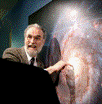Authors
Rajib Ganguly, University of Wyoming, Laramie, WY, USA
Michael S. Brotherton, University of Wyoming, Laramie, WY, USA
Nahum Arav, University of Colorado, BoulderFollow
Sara R. Heap, NASA Goddard Space Flight Center, Greenbelt, MD, USA
Lutz Wisotzki, Astrophysikalisches Institut Potsdam, Potsdam, Germany
Thomas L. Aldcroft, Harvard-Smithsonian Center for Astrophysics, Cambridge, MA, USA
Danielle Alloin, European Southern Observatory, Santiago, Chile
Ehud Behar, Department of Physics, Technion, Haifa, IsraelFollow
Gabriela Canalizo, Department of Physics, University of California, Riverside, CA, USA
D. Michael Crenshaw, Georgia State UniversityFollow
Martijn De Kool, Research School of Astronomy and Astrophysics, Mount Stromlo Observatory, Weston Creek, ACT, Australia
Kenneth Chambers, Institute for Astronomy, Honolulu, HI, USA
Gerald Cecil, Department of Physics and Astronomy, University of North Carolina, Chapel Hill, NC, USA
Eleni Chatzichristou, Institute of Astronomy and Astrophysics, National Observatory of Athens, Athens, Greece
John Everett, Canadian Institute of Theoretical Astrophysics, University of Toronto, Toronto, ON, Canada
Jack R. Gabel, University of ColoradoFollow
C. Martin Gaskell, University of Nebraska-LincolnFollow
Emmanuel Galliano, Department of Physics, University of California, Davis, CA, USA
Richard F. Green, Department of Physics, University of California, Davis, CA, USA
Patrick B. Hall, Department of Physics and Astronomy, York University, Toronto, ON, Canada
Dean C. Hines, Space Science Institute, Boulder, CO, USA
Vesa T. Junkkarinen, Center for Astrophysics and Space Sciences, University of California, San Diego, CA, USA
Jelle S. Kaastra, SRON National Institute for Space ResearchFollow
Mary Elizabeth Kaiser, Department of Physics and Astronomy, Johns Hopkins University, Baltimore, MD, USA
Demosthenes Kazanas, Laboratory of Astronomy and Solar Physics, NASA Goddard Space Flight Center, Greenbelt, MD, USA
Arieh Konigl, Department of Astronomy and Astrophysics and Enrico Fermi Institute, University of Chicago, Chicago, IL, USA
Kirk T. Korista, Western Michigan UniversityFollow
Gerard A. Kriss, Space Telescope Science Institute, Baltimore, MDFollow
Ari Laor, Technion, Haifa, IsraelFollow
Karen M. Leighly, Homer L. Dodge Department of Physics and Astronomy, University of Oklahoma, Norman, OK, USA
Smita Mathur, Ohio State UniversityFollow
Patrick Ogle, Spitzer Science Center, California Institute of Technology, Pasadena, CA, USA
Daniel Proga, University of Nevada, Las VegasFollow
Bassem Sabra, Faculty of Natural and Applied Sciences, Notre Dame University, Zouk Mosbeh, Lebanon
Ran Sivron, Department of Physics, Baker University, Baldwin City, KS, USA
Stephanie A. Snedden, Apache Point Observatory, Sunspot, NMFollow
Randal Telfer, Orbital Sciences Corporation, Greenbelt, MD, USA
Marianne Vestergaard, University of ArizonaFollow
Date of this Version
2-1-2007
Abstract
We present low-resolution ultraviolet spectra of 14 low-redshift (zem ≤ 0:8) quasars observed with the Hubble Space Telescope STIS as part of a Snapshot project to understand the relationship between quasar outflows and luminosity. By design, all observations cover the C iv emission line. Ten of the quasars are from the Hamburg-ESO catalog, three are from the Palomar-Green catalog, and one is from the Parkes catalog. The sample contains a few interesting quasars, including two broad absorption line (BAL) quasars (HE 0143-3535 and HE 0436-2614), one quasar with a mini-BAL (HE 1105-0746), and one quasar with associated narrow absorption (HE 0409-5004). These BAL quasars are among the brightest known (although not the most luminous) since they lie at zem < 0.8. We compare the properties of these BAL quasars to the zem < 0.5 Palomar-Green and zem > 1.4 Large Bright Quasar Survey samples. By design, our objects sample luminosities in between these two surveys, and our four absorbed objects are consistent with the ν ~ L0.62 relation derived by Laor & Brandt (2002). Another quasar, HE 0441-2826, contains extremely weak emission lines, and our spectrum is consistent with a simple power-law continuum. The quasar is radio-loud but has a steep spectral index and a lobe-dominated morphology, which argues against it being a blazar. The unusual spectrum of this quasar resembles the spectra of the quasars PG 1407+265, SDSS J1136+0242, and PKS 1004+13, for which several possible explanations have been entertained.



Comments
Published in The Astronomical Journal, 133:479-486, 2007 February. Copyright © 2007 The American Astronomical Society. Used by permission.